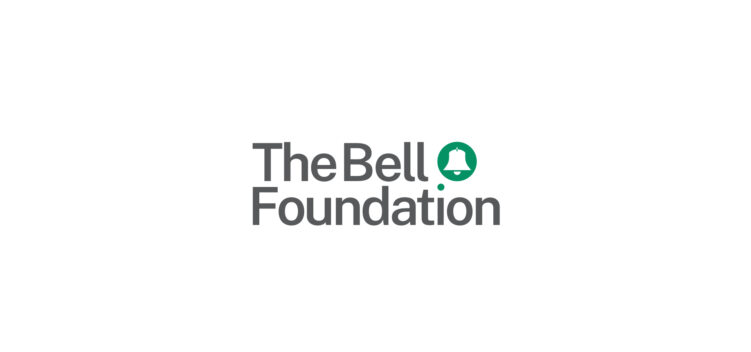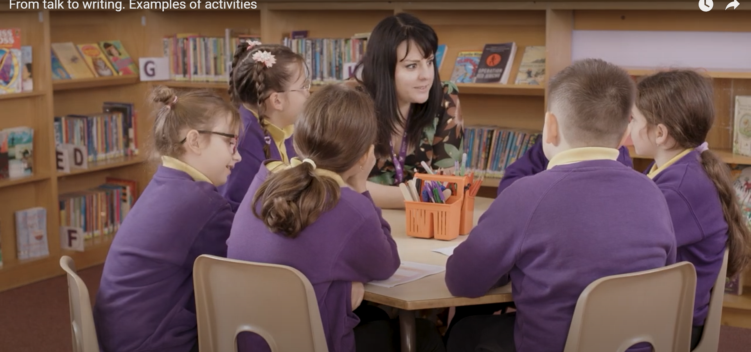Using Comprehensible English – for Secondary School (Online Regional Training)
- Date
- TBC
- Price
- £45
- Type
- Online course, Regional training
- Location
- Online
Explore our seven calls to action for the new Government to integrate children who use EAL.

“Talk to writing” occurs when a teacher plans scaffolded activities that allow learners to orally rehearse explicit vocabulary, sentence, and language structures that they require in order to write.
The type of scaffolding activities that can be used to support this include:
Talk to writing activities can be set up using the following teaching and learning cycle:
Such learning cycles allow learners to integrate developing concepts and language which supports them to progress from informal, spoken language to the more formal and academic language, which is required for written language. This progress trajectory has been called mode continuum.
Below is an example of ‘talk to writing’ in action. This is an example of a teacher working with a small group of primary learners at different levels of proficiency in English who share a first language, Romanian. Notice how she uses some of the activities from above.

Although the video above shows ‘talk to writing’ strategies in a primary setting, activities that encourage oracy are crucial to the development of writing skills in learners of all ages.
The ideas presented below can be used in any subject, text genre and at all levels of English language proficiency. Many of the activities suggested can be used for different parts of the mode continuum. For example, collaborative tasks can be used when building up the knowledge of the subject or when sharing reading of model texts.
For talk to writing to be effective in the classroom teachers are advised to:
Make sure that collaborative talk extends and challenges learners to use new language and to promote effective peer interactions, resulting in increasing oral independence.
The mode continuum sequence of spoken language to written language is a way for learners who use EAL to make full use of their current language resources and skills at the start of learning a new curriculum topic or concept. They can then build on it to acquire and apply the new language of the curriculum as the topic progresses as written language. This process has been described by researchers such as Gibbons (2002, 2015), Martin (1984) and Halliday (1993, in Gibbons, 2002).
Sharples (2021) suggests that a solid grounding in speaking skills is essential for the development of writing and the understanding of curriculum concepts. Talking to write affords the opportunity for learners to:
The teaching and learning cycle (Derewianka & Jones, 2016) allows for scaffolding to occur. It enables a learner who uses EAL to progress through the mode continuum from informal (spoken-like) register to formal (written-like) register. Scaffolding is a key concept in Vygotsky’s work on the relationship between thought and language (e.g., Vygotsky 1962). Bruner’s research (Bruner, 1975) also looked at this area and suggested that language learning is scaffolded by what he termed the learner’s Language Acquisition Support System. More recently, Gibbons emphasised the importance of scaffolding language to support and enable access to learning when working with learners who use EAL (Gibbons, 2015).
Bruner, J., 1975. Language as an instrument of thought. In Davies, A. ed. 1975. Problems of Language and Learning. London: Heinemann.
Derewianka, B. and Jones, P., 2016. Teaching Language in Context. 2nd ed. South Melbourne, Victoria: Oxford University Press.
Gibbons, P., 2002. Scaffolding language, scaffolding learning: Teaching second language learners in the mainstream classroom. 2nd ed. Portsmouth: Heinemann.
Martin, J., 1984. Language, Register and Genre. In Children Writing: Study Guide. In Christie, F. ed. 1984. Children writing: a reader. Geelong, Victoria, AU: Deakin University Press.
Sharples, R., 2021. Teaching EAL; Evidence based strategies for the Classroom and School. Bristol: Multilingual Matters.
Vygotsky L.S., 1962. Thought and language. Cambridge, Mass.: MIT Press.